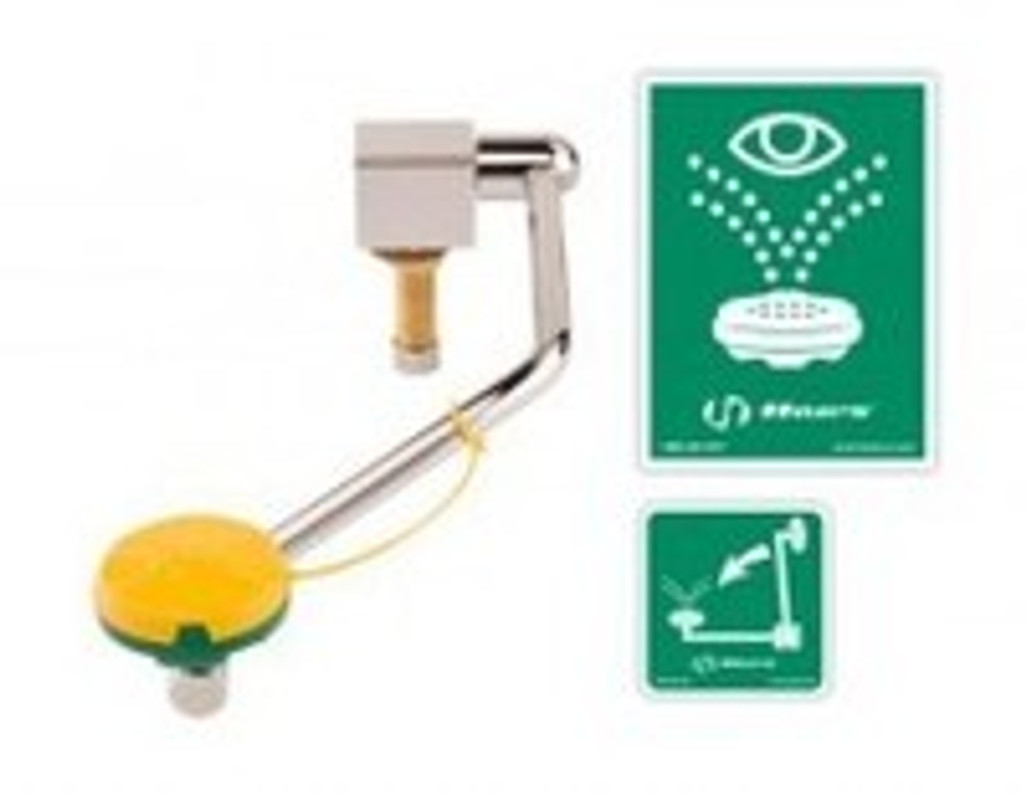What's The Purpose of an Emergency Eyewash Station?
An emergency eyewash station is an otherwise simple device that can protect workers against chemical-related eye injuries. While there are many different types, ranging in size, design, features and function, most emergency eyewash stations feature a shower-like sprayer that, when pressed, sprays water down on the worker's eyes; thus, flushing away any chemicals. Drains are typically installed directly below or nearby to prevent buildups of water and chemicals on the floor.
According to the Centers For Disease Control and Prevention (CDC), approximately 2,000 workers daily suffer a job-related eye injury that requires medical attention. That translates into 730,000 work-related eye injuries each year! Eye injuries may occur from debris shooting into a worker's eye, such as metal or wood chips, or they may occur from exposure to chemicals.
In the event a worker's eyes are exposed to chemicals, it's imperative that he or she immediately flush out the chemical, which is where an emergency eyewash station comes into play: the worker will stand underneath the station while allowing the water to spray down onto his or her eyes. As the water flows over the worker's eyes, it will wash out any hazardous chemicals or materials lingering on the surface.
Are Emergency Eyewash Stations Required In The Workplace?
Requirements regarding the use of emergency eyewash stations vary depending on the conditions of the workplace. Generally speaking, the Occupational Safety and Health Administration (OSHA) mandates that emergency eyewash stations be used in all workplaces where workers could be exposed to hazardous chemicals.
If you're unsure about the specific requirements regarding the use of eyewash stations, contact an OSHA representative in your area for more details.
"the employer must determine if employees can or will be exposed during the course of their duties to hazardous materials in such a way that the protections of an eyewash or emergency shower would be necessary. If hazardous materials are present at a worksite in such a way that exposure could not occur (for example, in sealed containers that will not be opened, or caustic materials in building piping), then an eyewash or emergency shower would not be necessary."
An emergency eyewash station is only effective if the worker keeps his or her eyes open. Depending on the type of chemical and other circumstances, a worker's natural response might be to keep their eyes shut. However, closing your eyes prevents the chemical from washing away, which cold make the problem worse.
Recent Posts
-
Fire Safety in the Workplace: What You Need to Know
What steps are you taking to prevent fires in your workplace? According to the U.S. Occupational Saf …Aug 23rd 2023 -
Is It Safe to Go Jogging With a Cold Infection?
If you're suffering from a cold infection, you might be wondering whether it's safe to go jogging. T …Aug 22nd 2023 -
5 Safety Tips to Follow When Using a Powder-Actuated Tool
Powder-actuated tools are commonly used to join materials to steel and concrete. Also known as Hilti …Aug 20th 2023




